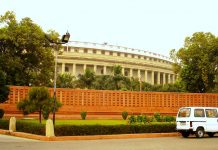This article is written by Divyanshi Singh of Symbiosis Law School, Noida. This article explains the Salwa Judum movement in detail and how the government failed in carrying it out.
Table of Contents
Introduction
The Salwa Judum Movement, known for its failed attempt to counter the Naxalite movement, was a part of an anti-insurgency operation in 2005 in Chhattisgarh. It was a state-sponsored movement to counter the ongoing Naxal violence in the state. However, in 2011, the Supreme Court of India outlawed the movement. To understand what the Salwa Judum Movement was and why it failed, we need to first understand what it was countering because that will help us understand the topic better.
Naxalite movement
Naxalite is a shorthand for the Maoist revolutionaries in India. The Naxal Movement started from the Naxalbari village in West Bengal, where some people gave the general designation to several Maoist-oriented, militant insurgent and separatist groups that have operated intermittently in India since the mid-1960s. On a broader aspect, Naxalism or the Naxal movement is applied to the communist insurgency itself. Let us understand the origin of the movement.
Naxalbari uprising in 1967
An armed peasant revolt occurred in the Naxalbari block of the Siliguri subdivision of Darjeeling in 1967. The revolt was led by the tribals and the communist leaders. The aim for the same was to launch an armed protracted people’s war in India for which Charu Majumdar had written the Historic Eight Document. This document laid a foundation for the Naxalite movement in India.
On 22 April 1969, the All India Coordination Committee of Communist Revolutionaries gave rise to the Communist Party of India (Marxist–Leninist) (CPI (ML)). The party was formed by the radicals of the CPI-M, like Majumdar and Saroj Dutta. Some groups maintained their own identities and remained independent of CPI (ML). One such organization was named Dakshin Desh after the name of its publication. The group has started printing Dakshin Desh in a Maoist style. A group of trade union activists joined the organization.
Practically, all Naxalite groups trace their origin to the CPI (ML). Further, the new party was divided after Satyanarayan Singh revolted against the party leadership. Two new factions came into being, one led by Charu Majumdar and the other by Satyanarayan Singh.
In 1972, the radical leader Charu Majumdar died of multiple diseases. His death caused the splitting of his party into pro and anti-Majumdar factions. However, the split did not stop there and the pro-Majumdar faction split again in 1972. This time it was based on pro and anti-Lin Biao factions.
The pro-Lin Biao faction became known as the Communist Party of India (Marxist–Leninist) and the anti-Lin Biao-group later became known as Communist Party of India (Marxist–Leninist) Liberation. The movement deteriorated into extreme fanaticism as a result of both external repression and a failure to sustain internal unity.
In 1975, the Dakshin Desh group was renamed as Maoist Communist Centre. On April 22, 1980, the Communist Party of India (Marxist-Leninist) People’s War, commonly called People’s War Group (PWG), was founded by Kondapalli Seetharamaiah. He sought a more efficient structure in attacks and followed the principles of Charu Majumdar. The PWG carried out various revolts and violence over decades.
In 2004, the Communist Party of India (Marxist–Leninist) People’s War (People’s War Group), and the Maoist Communist Centre of India (MCCI) merged and formed the Communist Party of India (Maoist).
This multiple splitting and constant violence is the biggest threat to the internal security of our country. In the eastern states of Chattisgarh, Odisha, Jharkhand and West Bengal, groups often refer to themselves as Maoists. They have been declared as a terrorist organization under the Unlawful Activities (Prevention) Act, 1967.
Causes of Naxalite movement
Every movement and every violence has a cause because of which it initiates. A few causes for the violent Naxalite movement are as follows:
- Lack of Human Development
- Exploitation and harassment suffered by the tribal population
- Cultural Humiliation
- Poor Health care access
- Slow implementation of land reforms
- Poverty causing low literacy rate
The Red Corridor
The Red Corridor refers to the territory occupied by the Left Wing Extremists, that are, the Maoists or the Naxalites. The area is spread over eight or more states. Following is the list of Affected areas divided based on their severity:
The Severely Affected States:
- Chhattisgarh
- Jharkhand
- Odisha
- Bihar
The Partially Affected areas are:
- West Bengal
- Maharashtra
- Andhra Pradesh
The Slightly Affected areas are:
- Uttar Pradesh
- Madhya Pradesh
Salwa Judum movement
The word ‘Salwa Judum’ means ‘Peace March’ in Gondi, a tribal Language. In 2005, the Chhattisgarh state government, with the support of the Home Ministry, sponsored an anti-Naxalite movement to counter the ongoing violent Naxalite movement in the state under the leadership of Congress MLA Mahendra Karma. It was a very rare instance in which two political parties collaborated for a movement against the Naxalites.
Very soon, the meetings were held in villages by the Salwa Judum activists along with the security forces. In these meetings, the activists tried to persuade the village youth to join the movement and as per the media, the villagers were even threatened that if they would not join the movement, their houses would be burnt.
Appointment of Special Police Officers by the Chhattisgarh government
The local tribal youth were trained by the state government for the Salwa Judum movement. Special Police Officers (SPO) had been appointed by the Chhattisgarh Police Regulations, with a total of 4048 officers. There is the active participation of the Salwa Judum and the security forces training them in military and weaponry skills as part of an official plan to create a civil vigilante structure parallel to that of the Naxalite.
People were forcibly removed from their communities and confined in ‘relief camps’ by the Salwa Judum activists and experienced extreme shortages of food, water, and other basic utilities.
All villages that refused to relocate to camps were labelled as “Maoist” and denied all health, education, and other services, including market access. As a result, a vast number of people were denied their fundamental rights guaranteed by India’s constitution. It was unmistakably admitted that the most serious offence, according to the law, is to stay neutral.
Legal provisions for the appointment of Special Police Officers
Under the Chhattisgarh Police Regulations, SPOs (appointed under Sections 17, 18, 19 of the Police Act 1861) are recruited during the special situations of unlawful assembly or riot or disturbances of the peace, in the case when the regular police force is insufficient to handle the crowd. They are not meant to counter long-term problems like that of guerilla warfare.
SPOs are expected to be persons of stature in the locality who can keep the peace, not juveniles or lumpen elements with supposedly criminal backgrounds. The SPO has the same powers, privileges, duties, punishments, and protection as a regular police officer.
A large number of SPOs were unemployed tribal youngsters who had joined the program solely to earn the Rs.1500 that SPOs were paid. Even this small amount was paid irregularly. Many of these SPOs had no clue that they were exposing themselves to terrible danger or that they were choosing sides in a battle against their own communities when they signed up. They assumed they were getting a ‘government job’, which is much desired after in an area with significant unemployment.
The illegality of Salwa Judum – analyzing the Supreme Court judgment
Social anthropologist Prof. Nandini Sundar and others filed a writ petition with the Supreme Court, which was decided on July 5, 2011, by Justice B. Sudershan Reddy and Justice S S Najjar. The ruling strongly indicted state officials, who were found to have violated constitutional principles by arming youth who had only completed the fifth grade and empowering them with police powers. The Supreme Court in Nandini Sundar & Ors. v. State of Chhattisgarh (2011) stated that Salwa Judum is illegal. Let us analyze what the case was about.
Issues
- The major issue, in this case, was to examine the constitutional validity of the Chhattisgarh Government’s recruitment of tribal people as special police officers (SPOs).
- Another important issue raised in this case was to analyze the constitutional validity of the Chhattisgarh Police Act, 2007.
Laws involved
- Section 17 of Indian Police Act, 1861– District Magistrate has the authority to appoint the SPOs.
- Section 18 of the Indian Police Act, 1861- SPOs draw their power, duties, and accountabilities from this statute.
- Chhattisgarh Police Act, 2007– SPOs were appointed under this Act.
- Article 21 of the Constitution of India– Violation of human rights as many innocent people lost their lives.
Judgment
- The Chhattisgarh government was ordered by the Supreme Court of India to disband Salwa Judum, a militia unit formed to confront Maoist guerrillas that control significant sections of the country on July 5, 2011.
- The Supreme Court ordered the Chhattisgarh police to immediately suspend and discontinue employing SPOs in any form in any actions, directly or indirectly intended to oppose Maoist/Naxalite activities.
- Salwa Judum became illegal on July 6, 2011. To end this, the Chhattisgarh government was ordered to retrieve all of these weapons as well as their ammunition and equipment.
- It was held by the Supreme Court that Chhattisgarh must cease and refrain from deploying SPOs in any fashion or form in any operations aimed at stopping Maoist/Naxalite activities in the state of Chhattisgarh. Moreover, the Union of India was asked not to use its fund, directly or indirectly, in any form of counterinsurgency operation against the Naxalites.
- The Chhattisgarh government was required to make arrangements for adequate security and take whatever measures are necessary, within the bounds of constitutional legality, to protect the lives of those who had previously been employed as SPOs, or who had received any initial orders of selection or appointment from any forces.
- The State of the Chhattisgarh shall take all appropriate measures to prevent the operation of any group, including but not limited to Salwa Judum and Koya Commandos, that in any manner or from seeking to take the law into private hands, act unconstitutionally or otherwise violate the human rights of any person. The measure to be taken by the State of Chhattisgarh shall include, but not be limited to, investigation of all previously inappropriately or incompletely investigated instances of alleged criminal activities of SalwaJudum or those popularly known as Koya Commandos, filing of appropriate FIR and diligent prosecution.
- In addition to the above, the appointment of the SPOs to perform any of the duties of regular police officers, other than those specified in Section 23(1) (h) and Section 23 (1) (i) of the Chhattisgarh Police Act, 2007, to be unconstitutional. Moreover, the court also upheld the violation of human rights in instant cases.
Case Analysis
The deployment of tribal youth as Special Police Officers (SPOs) against Maoist insurgency was deemed unlawful and unconstitutional by the Supreme Court in the current case. One of the extraordinary initiatives taken by the court was to instruct the state of Chhattisgarh to halt and refrain from utilising SPOs in any fashion or form in any activity. However, one should not overlook the number of occasions where SPOs played an important part in resolving the situation, as well as those reports that supported the appointment of SPOs. Overall, the decision is historic in that it upholds constitutional ideals.
Steps taken to remove Naxalite Movement
Intelligence and Networking
Multi-Agency Centre (MAC) at the central level and State Multi-Agency Centre (SMAC) at the state level were created by the state governments. In Maoist hotspots like Jagdalpur and Gaya, these centres have shown to be incredibly effective. Strengthening State Intelligence Bureaus (SIBs) in LWE-affected areas is another important step.
Deployment of Central Paramilitary Forces
An important aspect in improving the situation was the development of the Central Armed Police Forces (CAPF) to carry out counterinsurgency strategies. CAPFs have been deployed in the Naxal-affected states over 70,000. Additional assistance was provided by CoBRA, a group of soldiers skilled in guerrilla warfare and jungle warfare skills and dispatched to the worst-affected areas.
SAMADHAN
SAMADHAN was introduced by the Narendra Modi-led NDA government in May 2017 to hit at important points in the Maoist links. The acronym stands for:
S – Smart Leadership
A – Aggressive Strategy
M – Motivation and Training
A – Actionable Intelligence
D – Dashboard Based KPIs (Key Performance Indicators) and KRAs (Key Result Areas),
H- Harnessing Technology
A – Action plan for each theatre
N- No access to Financing.
Infrastructure Schemes
This programme provides funding for improved mobility, weaponry, vehicles, and other important infrastructure. A total of 250 fortified police stations were opened in the LWE-affected states as part of the plan. In December 2016, the Union government approved road-connectivity projects in 44 of the worst-affected areas, allocating INR 14025 crores.
Ban on the CPI (Maoist) and the UAPA Act, 2009
In 2009, the Central Government banned the CPI across the country (Maoist). The Unlawful Activities Prevention Act, 2009 was also passed by the government to put a check on the Naxalites and provide police and paramilitary forces greater autonomy.
These are just a few of the factors that characterise the government’s stance in Naxal-affected states. “One method fits all” would be a disaster given the wide variety of Maoist and Naxal populations. So the government is moving on with not only the “Law and Order Approach” but also the “Development and Rehabilitation Approach,” which has proven to be equally beneficial.
Conclusion
To conclude, the state must begin fighting the conflict lawfully, reduce collateral damage, improve the leadership of the security forces, and abstain from any human rights abuse. It would be better for the security forces to start defending the civilians living in the conflict zone instead of simply fighting Maoists on a massive scale. A political challenge must be mounted against the Naxalite movement that offers better alternatives to a Maoist approach and new perspectives. When it comes to this, the state should begin addressing the basic needs of the poor and performing its primary responsibility to offer human development to these disadvantaged communities.
References
- https://www.thehindu.com/news/national/Salwa-Judum-is-illegal-says-Supreme-Court/article13639702.ece/amp/
- https://indianexpress.com/article/explained/is-the-salwa-judum-back-bastariya-battalion-crpf-chhattisgarh-5190001/lite/
- https://www.britannica.com/topic/Naxalite
- https://www.youtube.com/watch?v=zf9-kfiCM4I
- https://www.youtube.com/watch?v=u1RDDeZGNAs
- https://www.jurist.org/commentary/2020/10/mritunjay-pathak-naxalism-niac/
- https://thetricontinental.org/dossier-32-communist-movement-in-india/
- http://www.rmlnlu.ac.in/pdf/6-NAXALITE_100620.pdf
- https://www.jstor.org/stable/pdf/27644153.pdf?ab_segments=0%252Fbasic_search_gsv2%252Fcontrol&refreqid=excelsior%3A69013fab38ea39f07cacf384fc48d204
- https://papers.ssrn.com/sol3/papers.cfm?abstract_id=1999761
Students of Lawsikho courses regularly produce writing assignments and work on practical exercises as a part of their coursework and develop themselves in real-life practical skills.
LawSikho has created a telegram group for exchanging legal knowledge, referrals, and various opportunities. You can click on this link and join:https://t.me/joinchat/L9vr7LmS9pJjYTQ9
Follow us on Instagram and subscribe to our YouTube channel for more amazing legal content.
 Serato DJ Crack 2025Serato DJ PRO Crack
Serato DJ Crack 2025Serato DJ PRO Crack











 Allow notifications
Allow notifications



